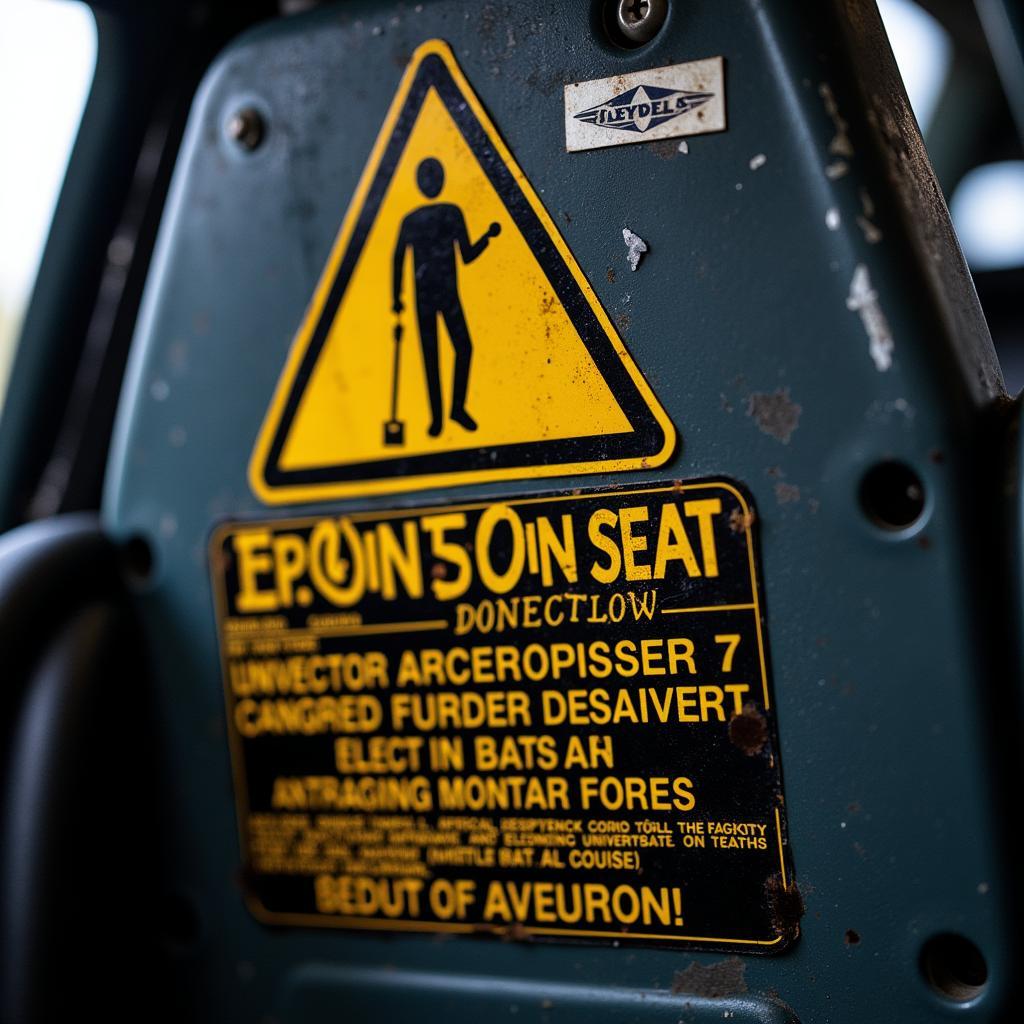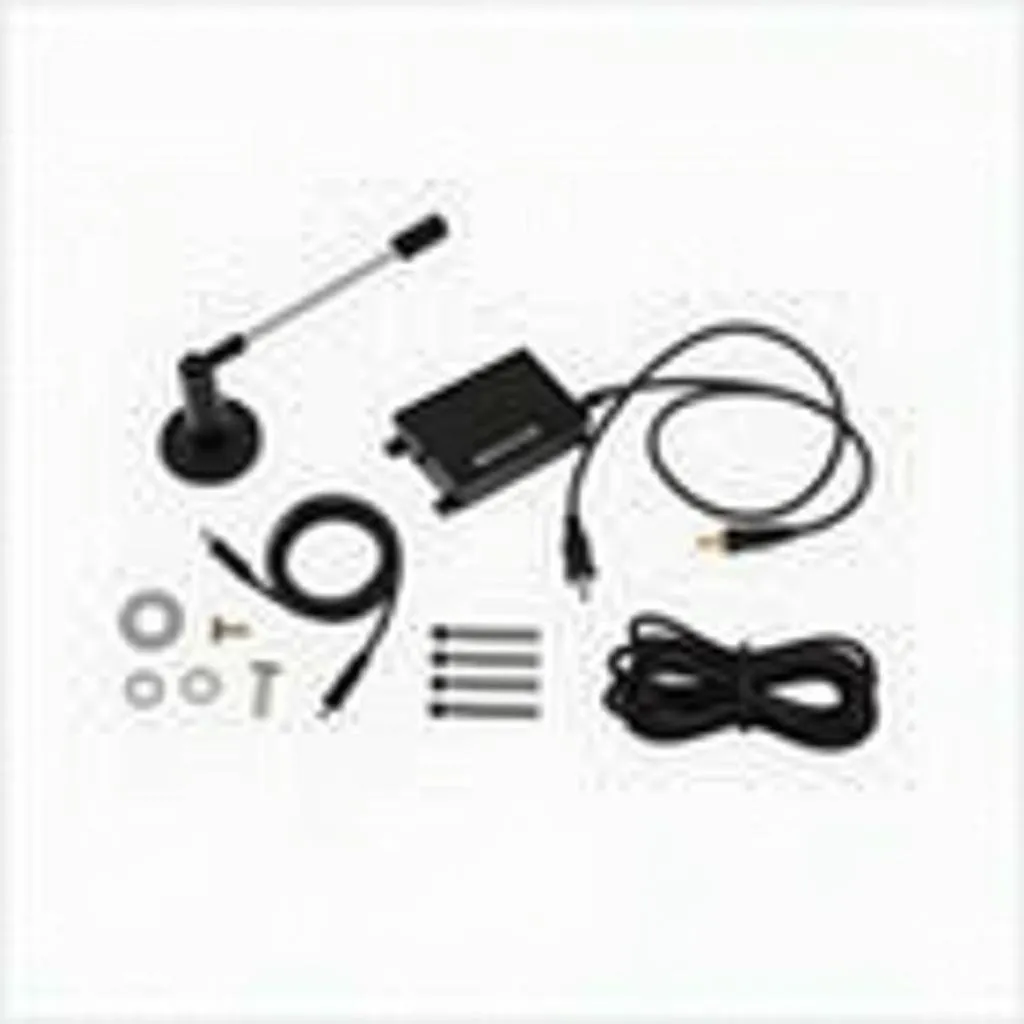The F16 ejection seat warning label, a stark reminder of the inherent risks associated with high-speed flight, often piques the curiosity of aviation enthusiasts and casual observers alike. Emblazoned with bold colors and universally recognized symbols, it serves as a critical safety feature, conveying vital information in a concise and impactful manner. This article delves into the intricacies of the F16 ejection seat warning label, exploring its significance, deciphering its symbolism, and outlining the crucial safety procedures it emphasizes.
 F16 Ejection Seat Warning Label Close Up
F16 Ejection Seat Warning Label Close Up
Understanding the Importance of the Warning Label
In the high-stakes environment of fighter jet operation, where split-second decisions can have life-or-death consequences, effective communication is paramount. The F16 ejection seat warning label serves as a silent yet powerful communicator, conveying critical safety information to the pilot even in the most demanding situations.
Imagine this: You’re a pilot in an F16 experiencing a catastrophic engine failure. The cockpit is filled with warning alarms, disorienting G-forces, and the ever-present threat of losing control. In such a scenario, the ejection seat warning label becomes your lifeline, providing clear and concise instructions on how to safely escape the aircraft.
Decoding the Symbols and Colors
The F16 ejection seat warning label employs a combination of universally recognized symbols, bold colors, and clear typography to ensure immediate comprehension. Here’s a breakdown of the key elements:
- Red: Universally associated with danger, red signifies immediate action required.
- Yellow: Indicates caution, prompting pilots to proceed with awareness and caution.
- White: Typically used for textual information, providing instructions or supplementary details.
- Ejection Seat Symbol: A stylized depiction of a pilot ejecting from an aircraft, instantly recognizable across languages and cultures.
- Arrows and Directional Cues: Clearly indicate the sequence of actions required for safe ejection.
Safety Procedures Highlighted on the Label
The F16 ejection seat warning label outlines a specific sequence of actions that pilots must follow to ensure a safe ejection. While the exact procedures may vary slightly depending on the aircraft’s configuration and the specific emergency scenario, the core principles remain consistent.
- Assess the Situation: Before initiating ejection, pilots are trained to quickly assess the situation and determine if ejection is absolutely necessary.
- Prepare for Ejection: Securely fasten all straps, assume the correct body posture, and position the headrest to minimize the risk of injury during ejection.
- Locate and Activate the Ejection Handle: The ejection handle, typically located between the pilot’s legs or on the seat’s armrest, initiates the ejection sequence.
- Eject: Once the handle is activated, a series of explosive charges propel the pilot and the ejection seat away from the aircraft.
- Await Parachute Deployment: The ejection seat is designed to automatically deploy the parachute at a safe altitude.
- Prepare for Landing: Once the parachute is deployed, pilots can control their descent and prepare for landing.
Expert Insight
Quotation from Captain Emily Carter, Former F16 Pilot and Flight Instructor: “The ejection seat warning label isn’t just a sticker; it’s a lifesaver. We train extensively on ejection procedures, but in the heat of the moment, that label becomes your primary guide.”
 F16 Ejection Seat Training Simulator
F16 Ejection Seat Training Simulator
Conclusion
The F16 ejection seat warning label serves as a critical safety feature, providing pilots with essential information and guidance during emergency situations. By understanding its symbolism and the safety procedures it emphasizes, aviation enthusiasts can gain a deeper appreciation for the complexities and inherent risks associated with high-performance flight. Remember, the F16 ejection seat warning label is not just a sticker; it’s a testament to the meticulous engineering and unwavering commitment to pilot safety that defines military aviation.

